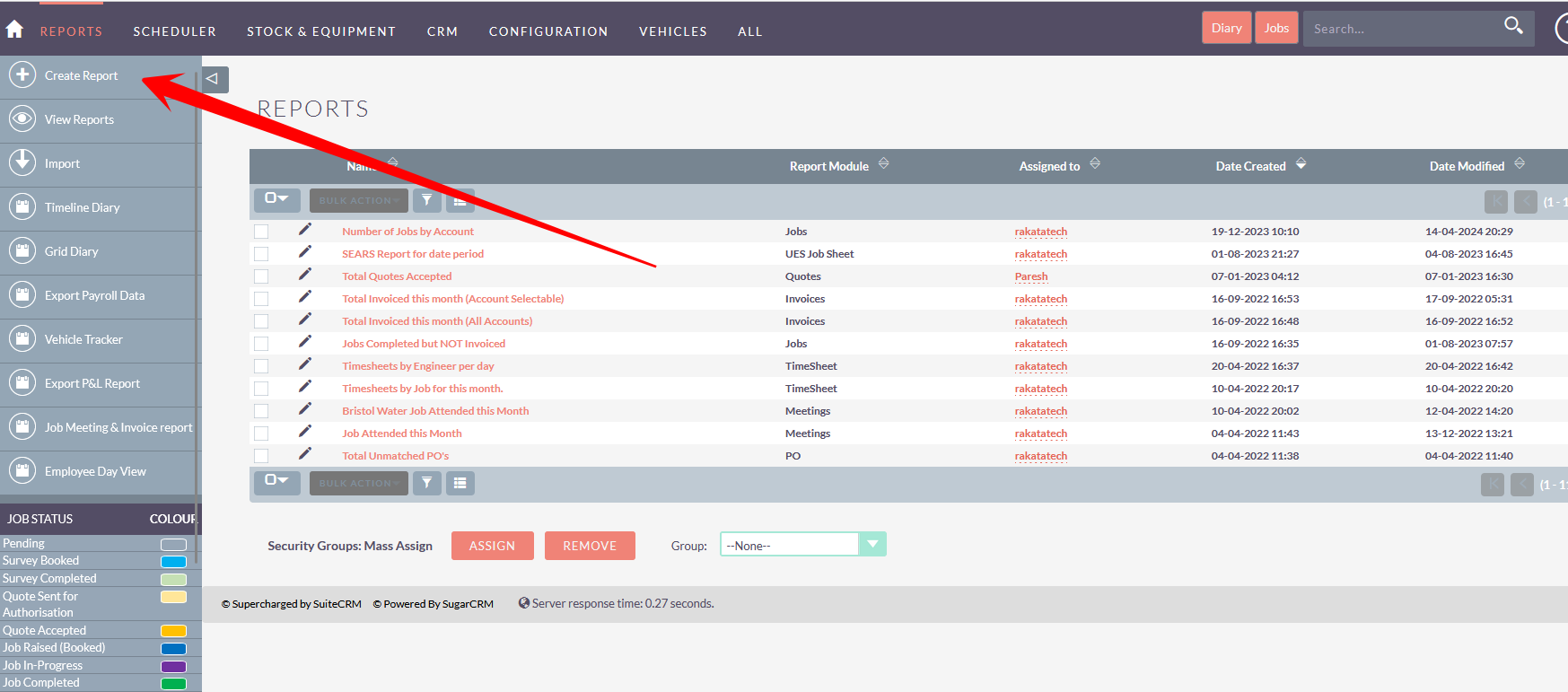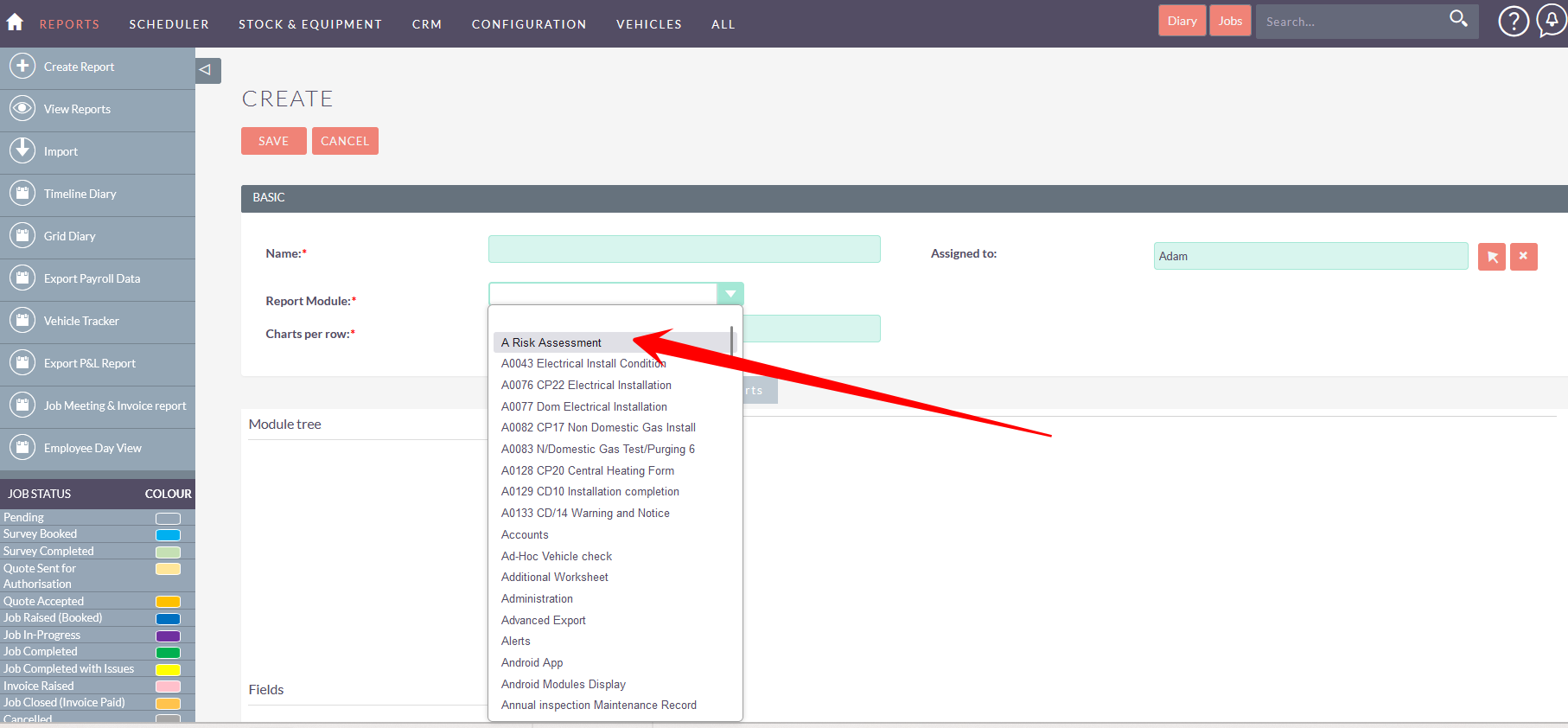Creating reports
🎬 Managing and Creating Reports
Any administrator has the ability to create custom reports. Most standard reports can be created from the reports module. You do not need to know SQL or code to create basic reports.
Create a report
Click on the Create Report button
Select the core module that the report is based on.
Once you have selected a Report Module, the list of fields available will display on the left panel. You can add fields to the 'Fields' section of the report by expanding the module you wish to select fields from and then drag and drop those fields into the field section.
For example
- Select the module you want to report on
- Click the field you want to add to the report
- See the field added and select your paremeters
Once you have added fields to a Report, there are multiple options to configure for those fields:
-
Display – True or false option. Allows you to specify whether this field should be displayed on the report, or hidden. Users may wish to add fields to perform a function/sort/group/total but may not wish to show this on the Report.
-
Link – True or false option. Allows you to make the field a link. Setting this option to true will hyperlink the field on the Detail View of the report, allowing you to click on the record. This will navigate you to the appropriate record. For example, linking the Opportunity Name will take you to the Detail View of that Opportunity.
-
Label – This is the label that will be displayed for the Column/Field on the Report. You can change the label from the default to any alphanumerical value.
-
Function - Provides five options: Count, Minimum, Maximum, Sum and Average. Allows you to perform functions on alphanumerical fields. Users may wish to calculate the average Opportunity Amount, or Count total Opportunities at a given Sales Stage.
-
Sort – Ascending or Descending. Allows you to select whether to sort the field/column descending or ascending. This can be done for all fields.
-
Group – True or false option. Allows you to group by this field. For example, you may wish to group by Sales Stage when reporting on an Opportunity.
-
Total – Provides three options: Count, Sum and Average. This allows users to perform total calculations on numerical fields. This is useful for financial reporting such as the total value of all Opportunities at a given Sales Stage.
Adding Conditions
Once you have added the fields to your Report, you can add condition lines to the Report. You can add conditions with the same procedure as adding fields. Using the drag and drop functionality, you can drag fields into the 'Conditions' area which will add the field and allow you to specify the condition for that field.
You can add charts to Reports. Charts provide a visual representation of the Report data to you. In some scenarios, or for particular users, visual aids such as charts can assist quicker analysis and better understanding.
Chart Types
There are six types of chart that the user can select to display Report data. These are:
-
Pie Chart
-
Bar Chart
-
Line Chart
-
Radar Chart
-
Stacked Bar
-
Grouped Bar
To add a chart, you can click the 'Add Chart' button, below the Conditions section within the Report Edit View.
Once you click add chart, you will be presented with the option to specify the following information:
-
Title – Allows the user to specify the title for the chart. This will show on the Detail View of the Report and also on the dashlet chart.
-
Type – This allows the user to select from one of the six chart types detailed above.
-
X Axis – Allows the user to select the column that should be used for the X Axis.
-
Y Axis – Allows the user to select the column that should be used for the Y Axis.
Once you have specified the chart details, save the Report. This will display the chart on the Detail View of the Report, below the list of records returned.





